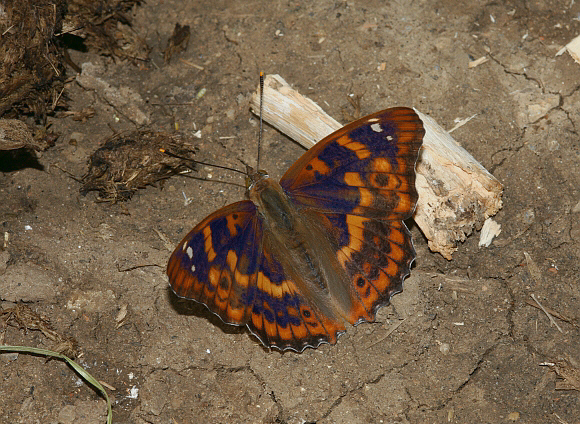
Lesser Purple Emperor Apatura ilia, Aggtelek, Hungary – Peter Bruce-Jones
Introduction
The genus Apatura comprises of 4 species, 2 of which – iris and ilia, have a widespread distribution covering most of Europe and temperate Asia. The other 2 species are metis which is found in south-east Europe, Kazakhstan and s.w. Siberia; and laverna from n.e. China. Apatura are closely related to the South American genus Doxocopa, and in common with them are sexually dimorphic – the males possessing a beautiful purple sheen that is lacking in the females.
Apatura ilia has an almost unbroken range stretching from northern Portugal to Siberia, Ussuri and Japan.
The European subspecies A. ilia ilia produces several differently coloured forms, ranging from the yellow-orange marked clytie illustrated above, to barcina from Catalonia which has broad pure white markings and reflects a particularly vivid purple sheen from the wings of males.
See also the entries for Apatura ilia praeclara and Apatura ilia yunnana from China.
Habitats
This species is found in damp deciduous woodlands, forests and river valleys at altitudes between sea level and about 600m.
Lifecycle
In cooler localities there is a single generation per year emerging in June. It is bivoltine in the warmer southern part of it’s range, producing a second brood of adults in August / September.
The eggs are laid singly on the upperside of leaves of poplar trees ( Populus sp ) and less often on sallow ( Salix ). The larva ( except that of the 1st bivoltine generation ) hibernates when young, either on the upper surface of a leaf which it has silked to prevent it from becoming detached from it’s twig; or in the fork of a narrow branch. When mature the larva is pale green, marked with pale diagonal lines on the sides, and is incredibly well camouflaged when at rest on sallow or poplar leaves. The pupa is equally well camouflaged, and is suspended from beneath a leaf.
Adult behaviour
Males, like those of its larger relative iris, are well known for their habit of descending from the trees to feed at unsavoury substances including faeces and carrion. They obtain vital salts from these substances, which are passed to the females during copulation, and are possibly essential for the production of fertile eggs.
Females are seen much less commonly, and usually encountered when ovipositing on the lower foliage of the foodplants. They are rarely seen feeding, and probably obtain most of their nourishment from honey-dew ( aphid secretions which coat the upper surface of leaves ).
Both sexes, like those of all Apatura species, migrate to hill-tops or ridges ( or in the case of lowland colonies to the tallest trees in the vicinity ), where courtship and copulation take place.
After copulation they return to the valleys, where the females tend to oviposit mainly on trees growing along the edges of forest roads and sunlit rides. The males meanwhile “refuel” on fluids exuding from dug and carrion, or from tree sap, prior to seeking a second or third female with which to mate.
